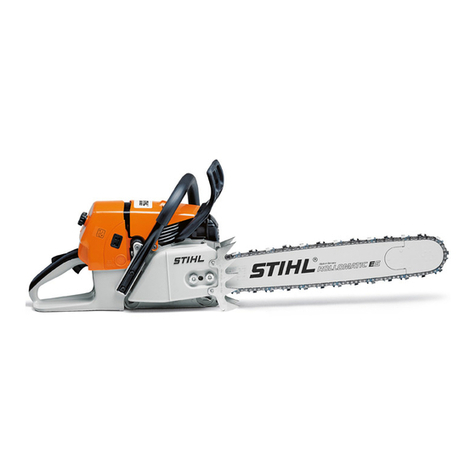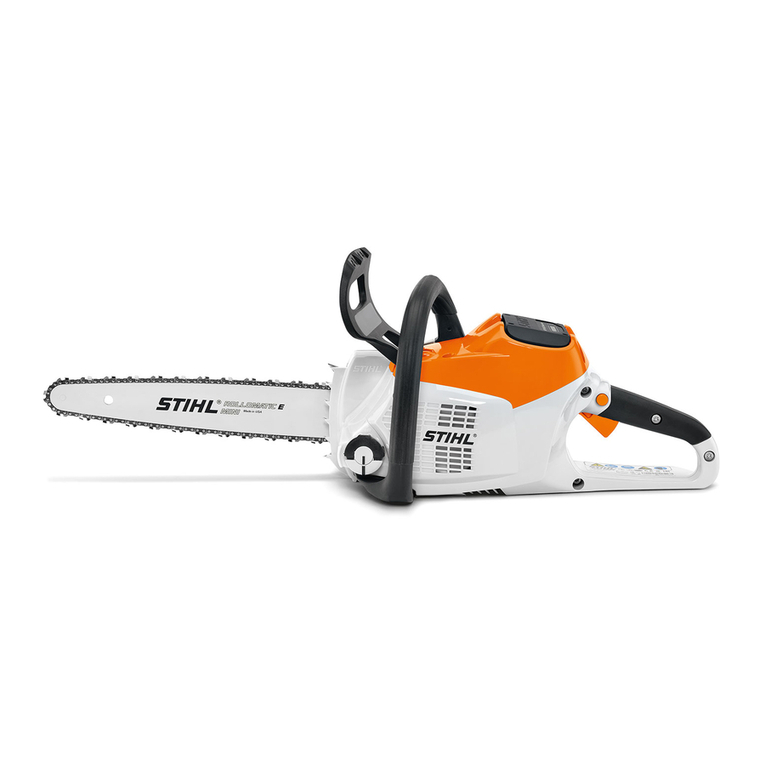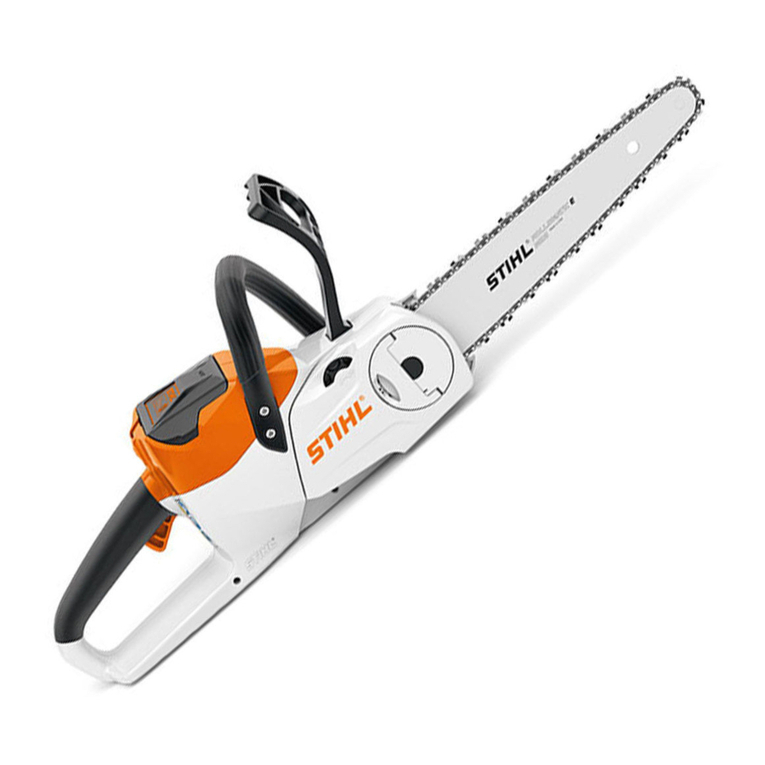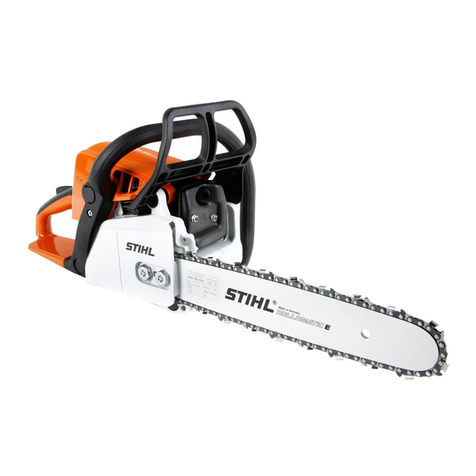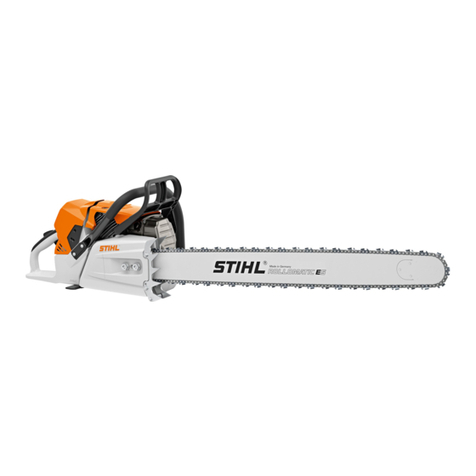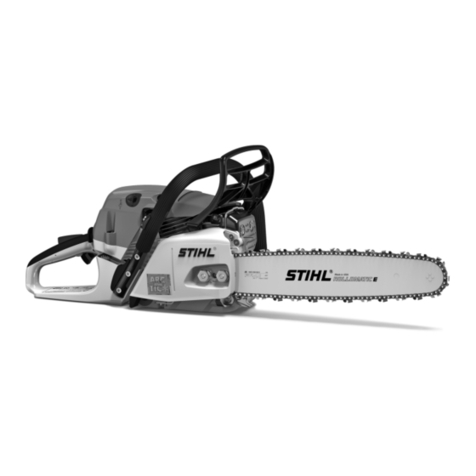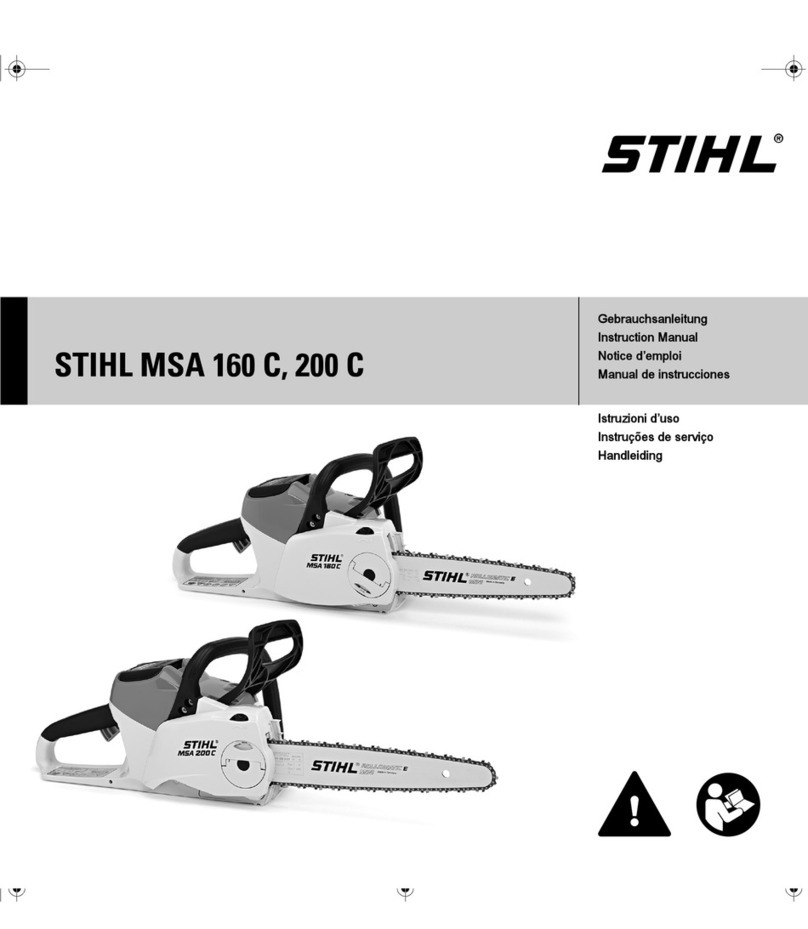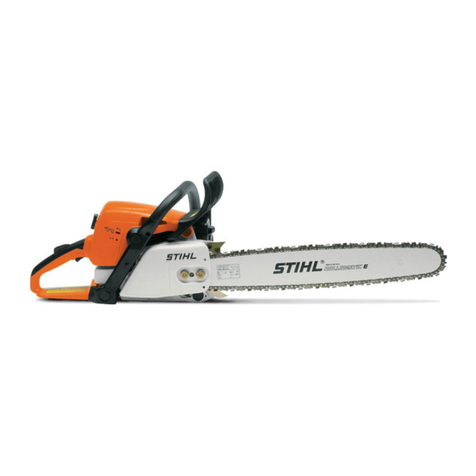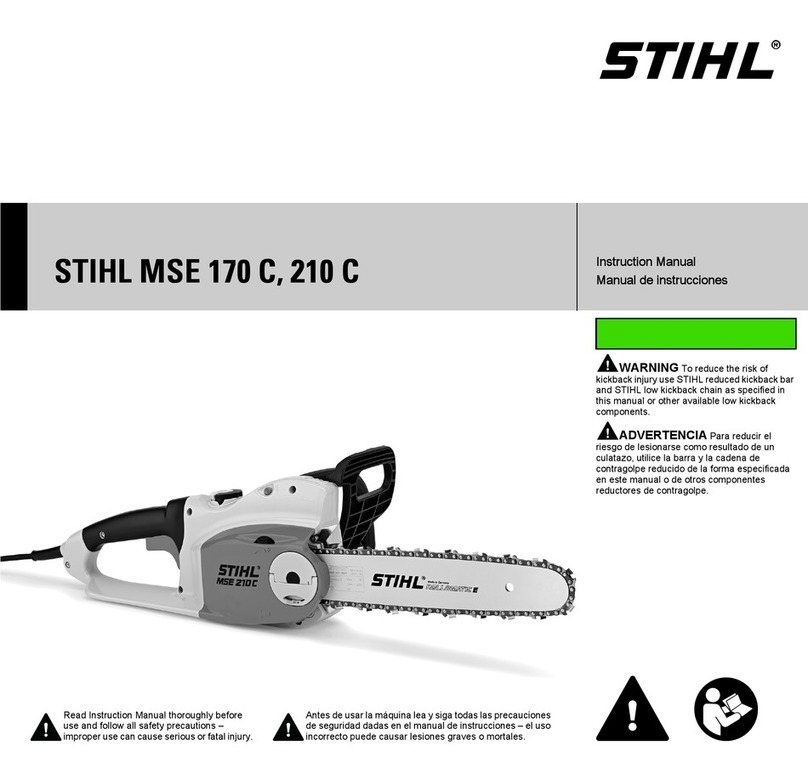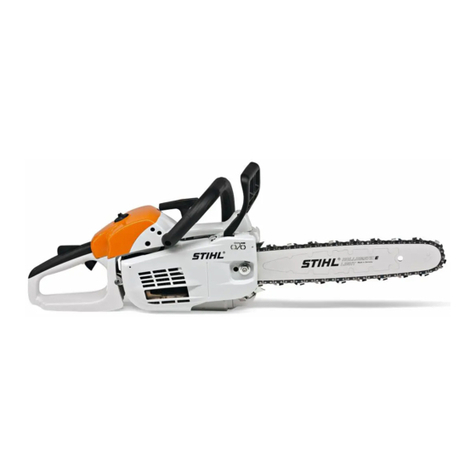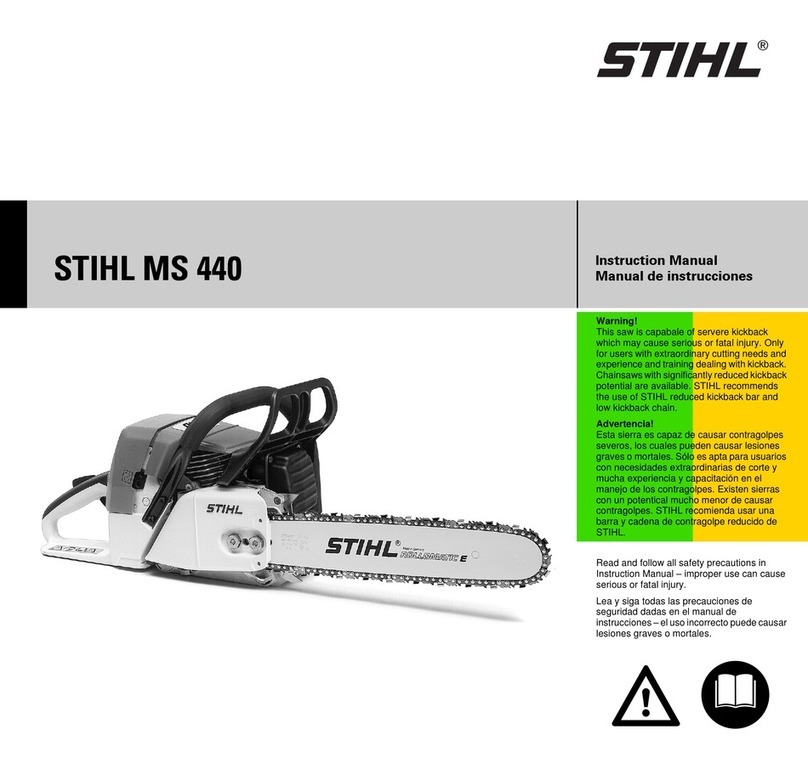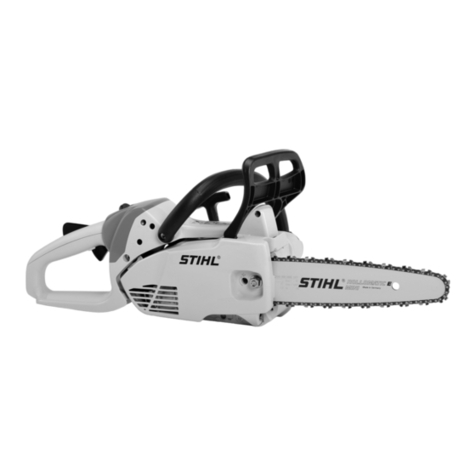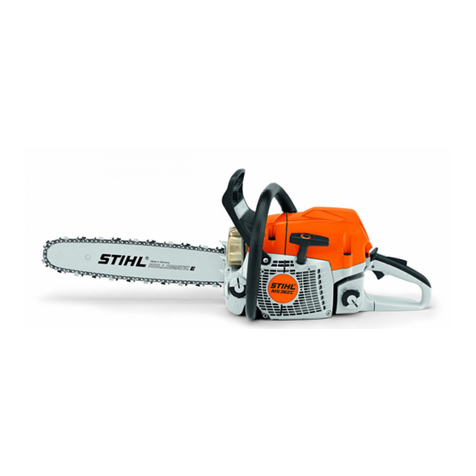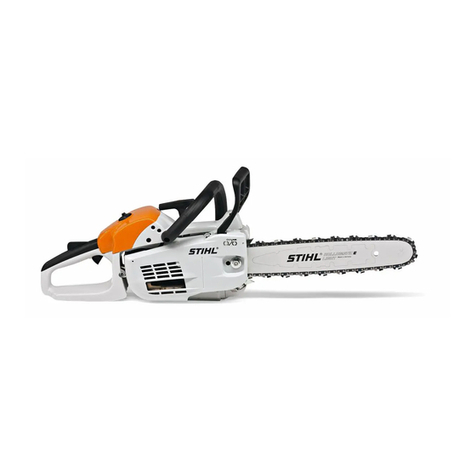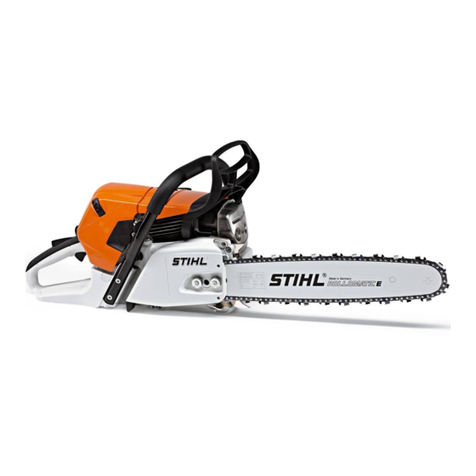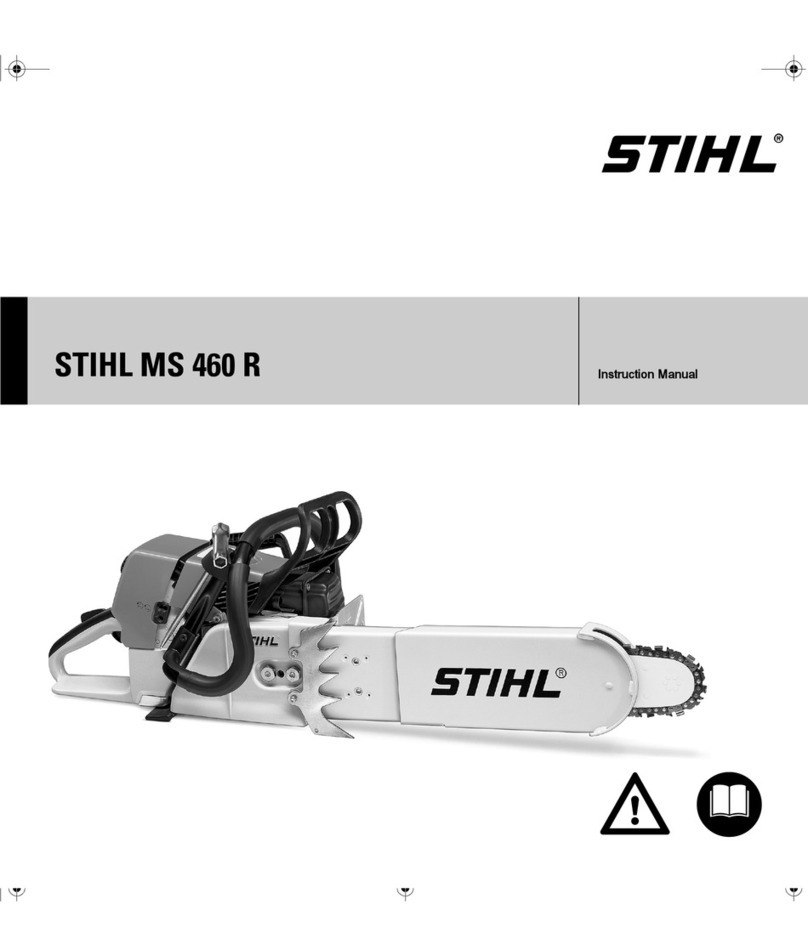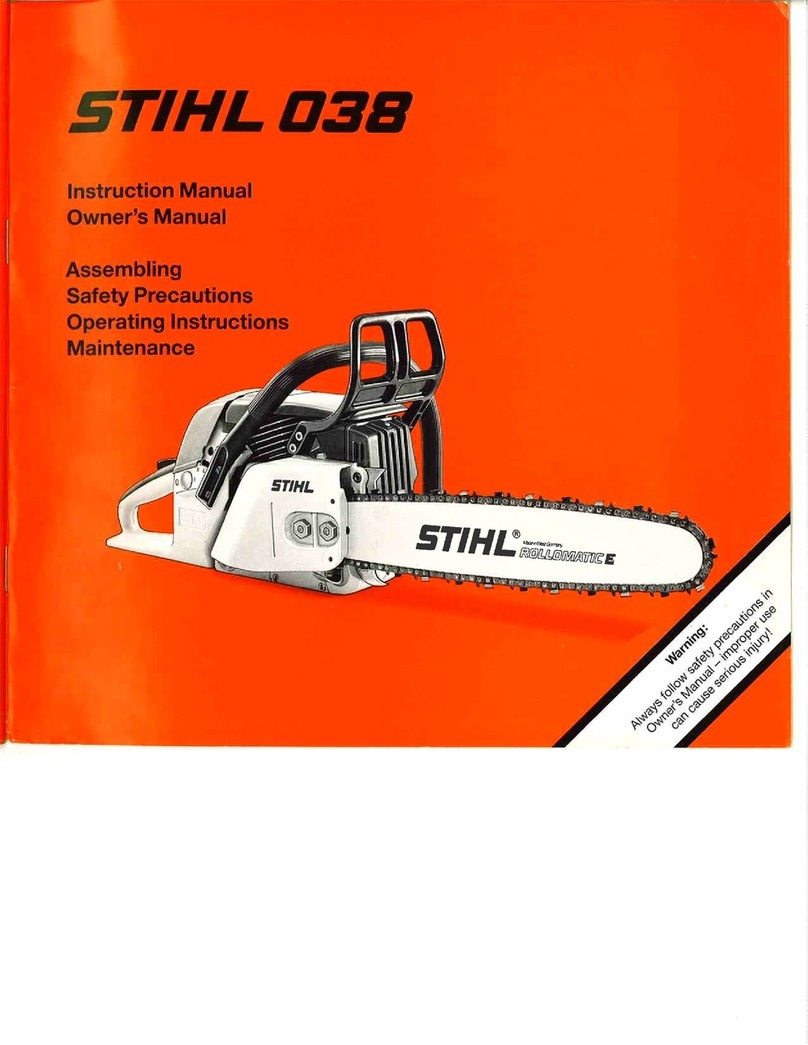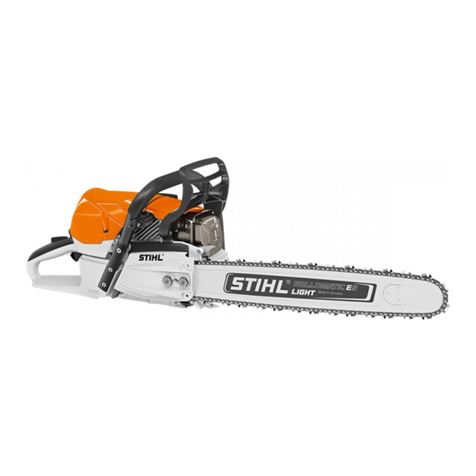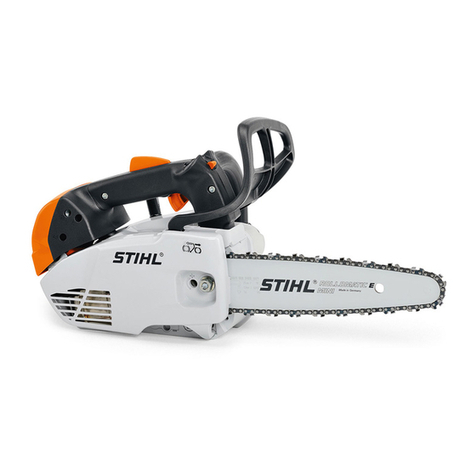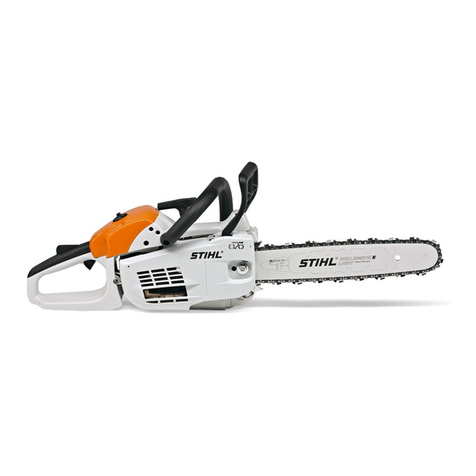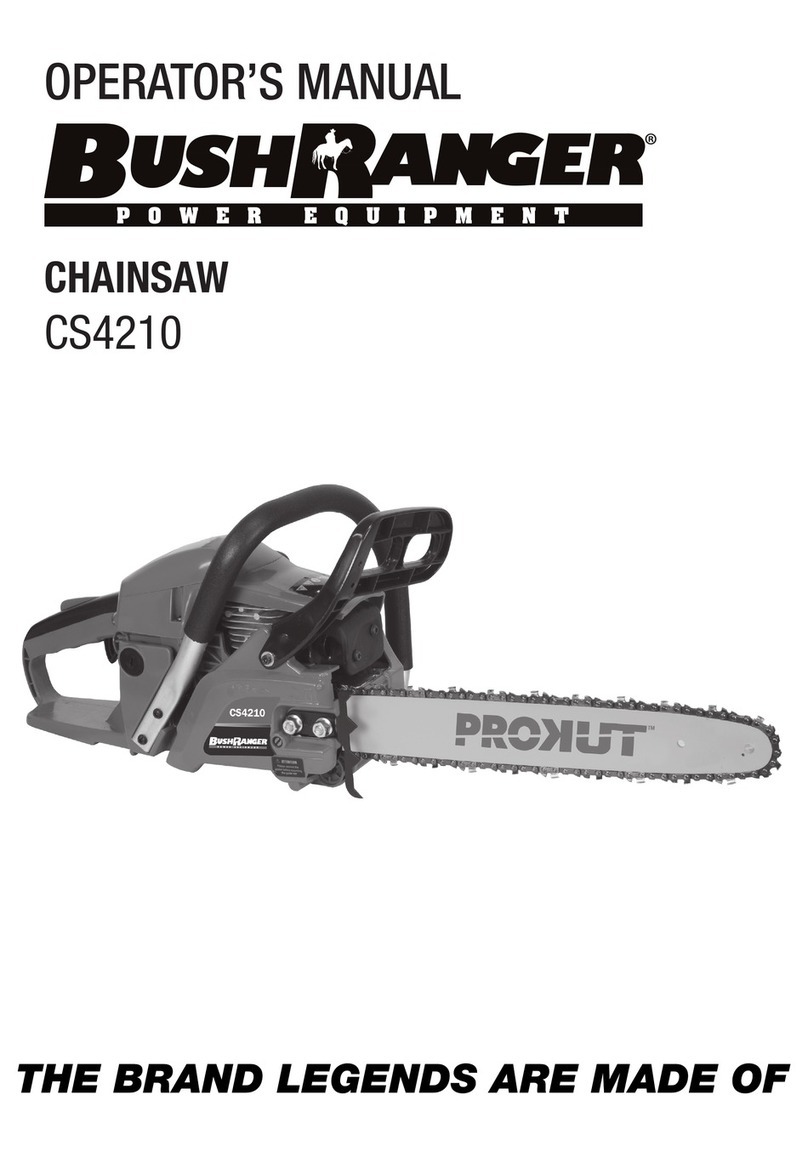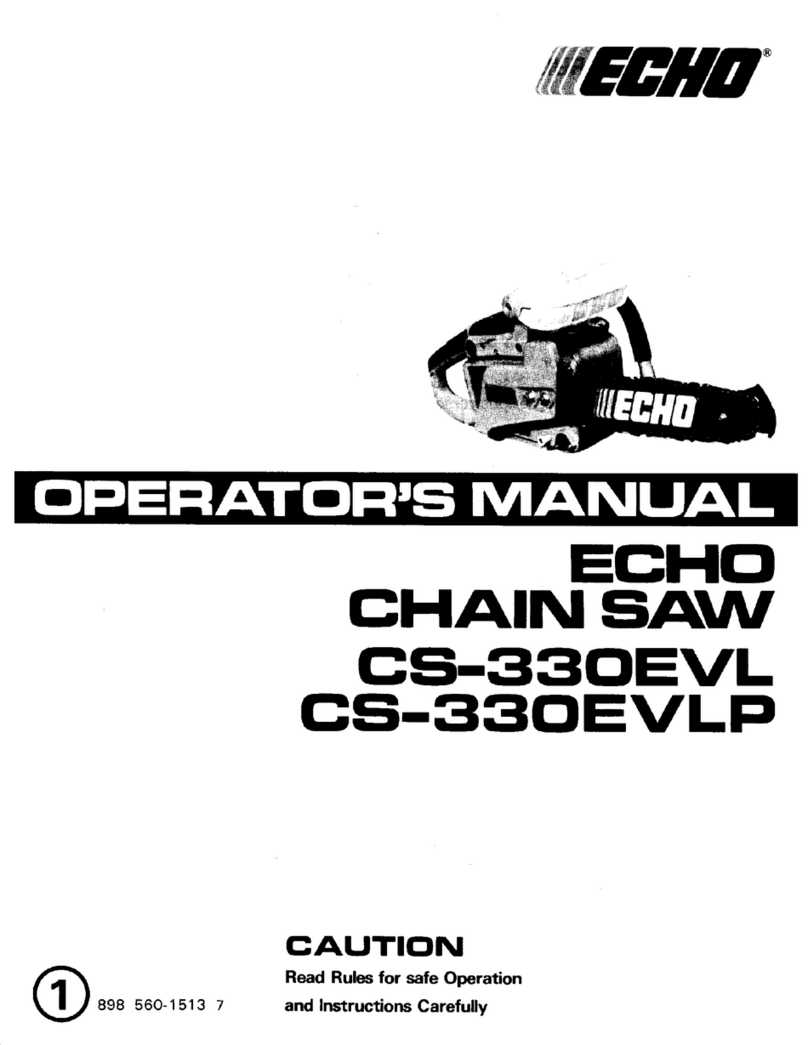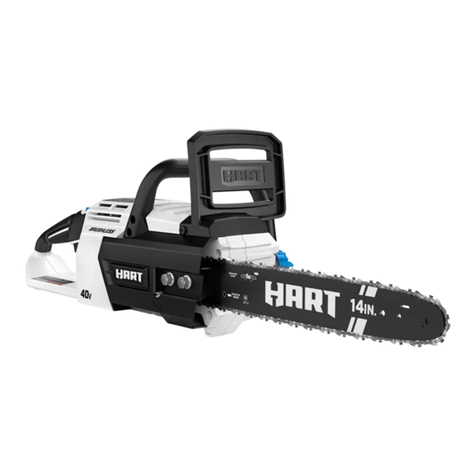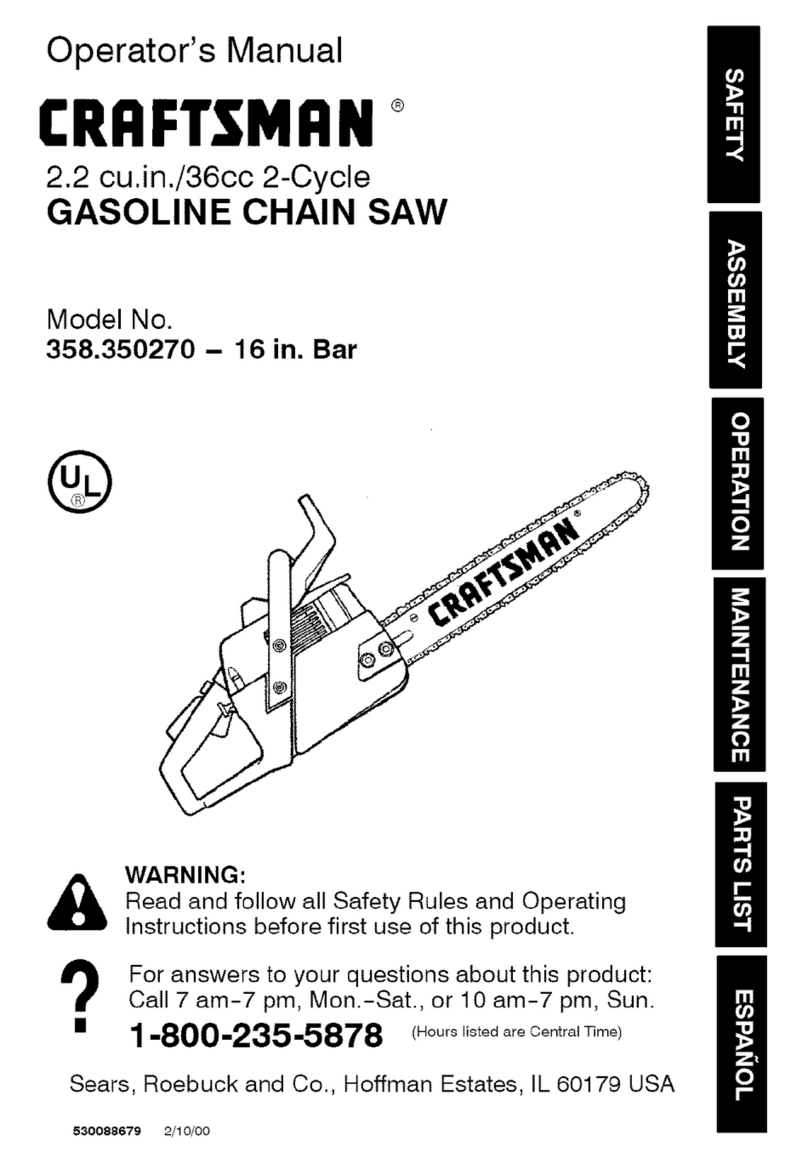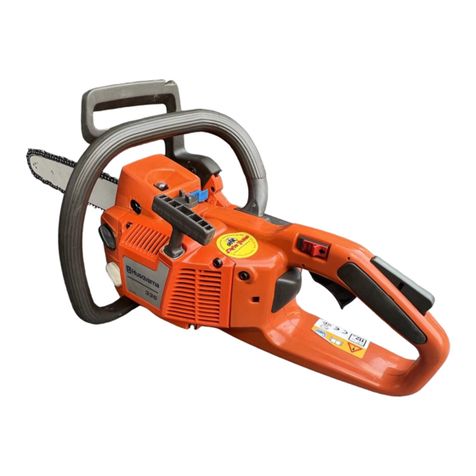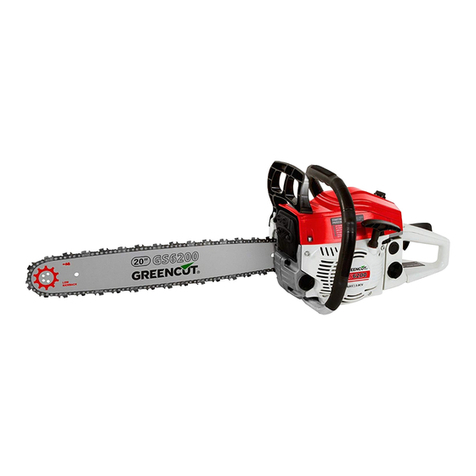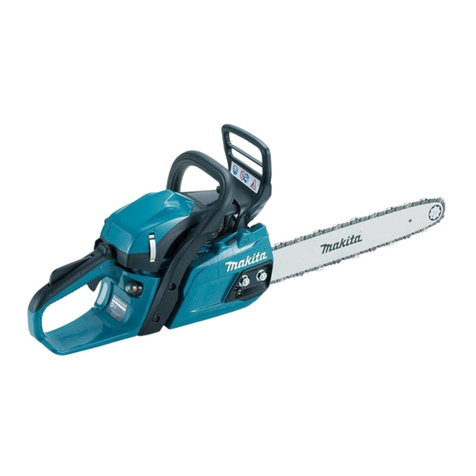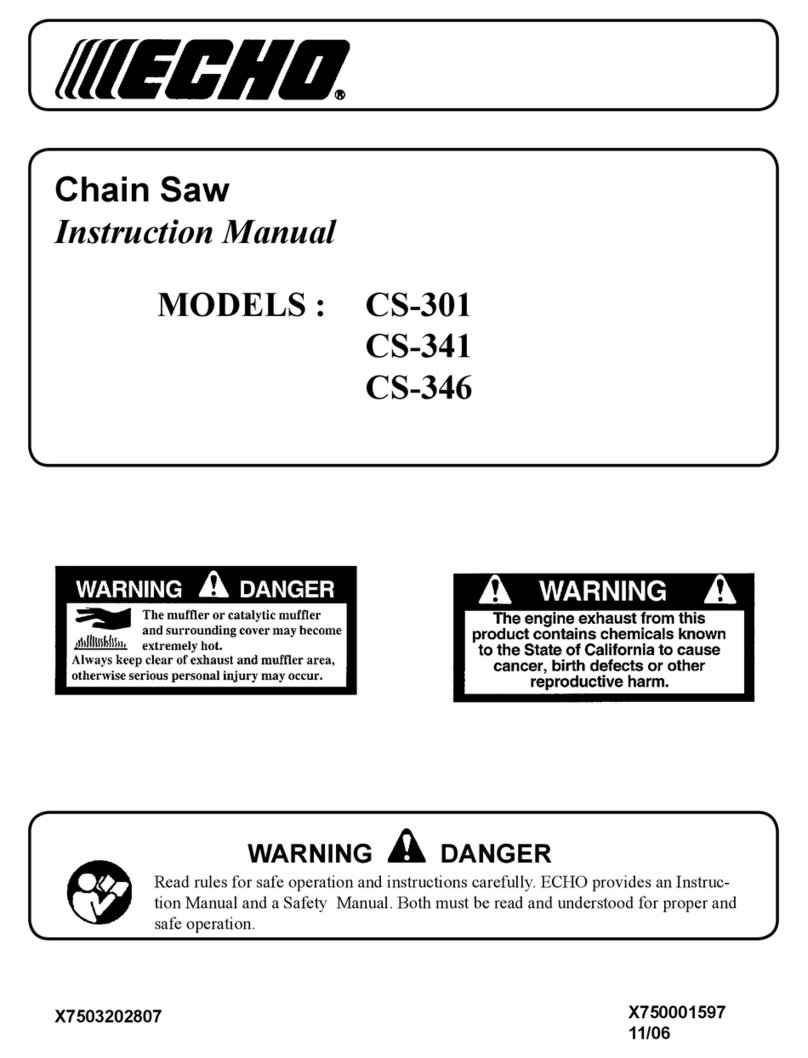Chain Saw Safety Manual
English
2
Observe the national safety regulations
issued, for example, by the employers'
liability insurance association, social
security institutions, occupational safety
and health authorities or other
organizations.
If you have never used a power tool
before: Ask the salesperson or another
expert to explain how to use it safely – or
attend a training course.
Minors should never be allowed to use a
chain saw – except for young trainees
over the age of 16 when working under
supervision.
Keep children, animals and bystanders
well away from the machine.
When not using the machine, it must be
laid down in such a way that it does not
endanger anyone. Ensure that the
machine cannot be used without
authorization.
The user is responsible for accidents or
risks involving third parties or their
property.
The machine should only be provided or
loaned to people familiar with this model
and its operation – and the Instruction
Manual should always be handed over
with the machine.
The machine may only be operated by
people who are fit, in good physical
health and in good mental condition. If
you have any condition that might be
aggravated by strenuous work, check
with your doctor before operating a
power tool.
If you have a pacemaker: The ignition
system of your machine produces an
electromagnetic field of very low
intensity. An effect on individual
pacemaker types cannot be excluded
entirely. STIHL recommends that you
consult your doctor and the
manufacturer of your pacemaker in
order to avoid all health hazards.
Anyone who has consumed alcohol,
medicines affecting their ability to react
or drugs must not operate a power tool.
Postpone the work if the weather is bad
(rain, snow, ice, wind) - higher risk of
accidents!
Do not cut any material other than wood
or wooden objects.
Other uses are not permitted and may
lead to accidents or damage to the
machine. The machine must not be
modified in any way - this may also lead
to accidents or damage to the machine.
Only use tools, guide bars, chains, chain
sprockets or accessories that have been
approved by STIHL for this machine or
which are technically equivalent.
Contact a dealer if in doubt. Only use
high-quality tools or accessories.
Otherwise there may be a risk of
accidents or damage to the machine.
STIHL recommends the use of genuine
STIHL tools, guide bars, chains, chain
sprockets and accessories. These have
been optimized for the product and the
user's requirements.
Clothing and equipment
Wear proper protective clothing and
equipment.
Clothing which could become trapped in
wood, brush or moving parts of the
machine should not be worn. Do not
wear a scarf, tie or jewelry when
operating the machine. Long hair must
be tied up and covered (headscarf, cap,
helmet, etc.).
Safety Precautions and
Working Techniques
Special safety precau-
tions must be observed
when using a chain saw
because the work goes
faster than with an axe
and a hand saw, because
the chain runs at very
high speeds, and
because the cutters are
extremely sharp.
It is important that you
carefully read the entire
Instruction Manual before
using the machine for the
first time and keep it in a
safe place for future ref-
erence. Non-compliance
with the Instruction Man-
ual may cause serious or
even fatal injury.
Clothing must be sturdy
and snug-fitting, but allow
complete freedom of
movement. Wear snug fit-
ting clothing with cut-
retardant pads – an
overall, not a loose-fitting
jacket.
